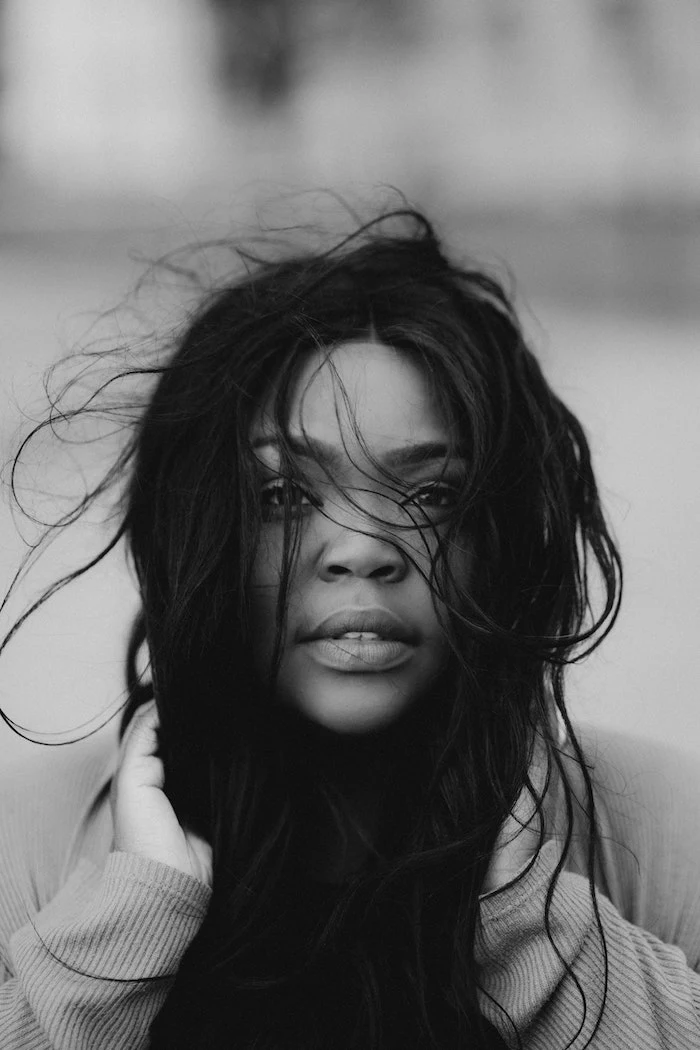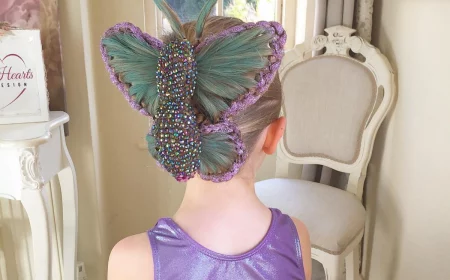Your Hair Hates Your Vacation: A Stylist’s Real-Talk Survival Guide
Every year, it’s the same story. September rolls around, and my salon chair is filled with what I lovingly call “vacation-hair casualties.” We’re talking brittle, faded color and, sometimes, even a lovely shade of swampy green. I once had a client come back from her honeymoon with blonde highlights that had turned so green and felt so gummy, she was terrified it would all break off. It’s not just about looks; it’s about the literal health of your hair, and summer is basically a war zone for it.
In this article
My mission here is simple. I want to give you the insider playbook that I share with my clients and new stylists. We’re going to get into the nitty-gritty of what sun, chlorine, and salt are actually doing to your hair. Once you get the “why,” the “how to fix it” makes so much more sense. This is the guide I wish I could staple to every client’s plane ticket.

Why Your Hair Gets Wrecked in the Summer
So, before we talk solutions, let’s get to know the enemy. Your hair is up against three big bullies: UV rays, chlorine, and saltwater. Each one has a different method of attack.
UV Rays: The Slow-Motion Bleach Job
You’d never skip sunscreen for your skin, right? But your hair is getting blasted, too. The sun’s UV rays chew up the keratin proteins that make up your hair. Think of a brand-new rope: strong and solid. Now picture that same rope left outside all summer. It becomes frayed, weak, and brittle. That’s your hair on sun.
The UVA rays go deep, destroying the natural and artificial pigments that give your hair its color. This is why that expensive balayage you got in May is a washed-out, brassy mess by August. UVB rays, on the other hand, attack the hair’s outer layer, the cuticle. They lift up those protective “shingles,” leaving your hair feeling rough, tangly, and ready to snap.

Chlorine: The Chemical Stripper
A cool dip in the pool feels amazing, but for your hair, it’s a chemical bath. Chlorine is an oxidizer, and its job is to kill germs. The problem is, it can’t distinguish between bad bacteria and the natural, protective oils (your sebum) on your hair and scalp. It strips them right off.
And that infamous green tint? Oh yeah, that’s a classic. But here’s a fun fact: it’s not the chlorine itself. Chlorine oxidizes the copper and other hard metals found in the pool water. Those little oxidized metal particles then grab onto the proteins in your hair shaft, staining it green. Prevention is SO much easier (and cheaper) than a color correction appointment with me.
Saltwater: The Dehydrator
A day at the beach is good for the soul but rough on the strands. Seawater is a hypertonic solution, meaning it has a high concentration of salt. Through a simple process of osmosis, that salt literally pulls the moisture right out from the inside of your hair shaft. When your hair dries, it leaves behind crunchy salt crystals that cause friction, lift the cuticle even more, and lead to that stiff, tangled mess. That “crunch” is the sound of your hair begging for a drink.

Your Summer Hair-Saving Shopping List
You don’t need a whole separate suitcase for products, I promise. You just need a few smart essentials. Spending a little upfront on prevention will save you a ton on fixing the damage later on.
For those who just want the quick and dirty list, here’s your summer hair care starter kit:
- A Cheap Silicone Conditioner: To use before you swim.
- A Chelating Shampoo: The secret weapon against chlorine buildup.
- A Deep-Conditioning Mask: For weekly moisture restoration.
- A UV Protectant Spray: Think of it as sunscreen for your hair.
- A Wide-Brimmed Hat: Honestly, your #1 best defense.
1. Pre-Swim Armor (Your First & Cheapest Defense)
This is the most important trick I can teach you, and it costs next to nothing. Your hair is like a sponge. If that sponge is dry, it will soak up the first liquid it touches—chlorine or salt. So, don’t let it. Before you jump in the water, drench your hair with clean tap water or bottled water. Squeeze out the excess, then slather on a cheap, silicone-heavy conditioner, like something from Suave or V05 for a couple of bucks. The hair shaft is now full of clean water and coated with a protective barrier, so it can’t absorb as much of the damaging stuff. This simple step is a total game-changer.

2. The Right Shampoo (Clarifying vs. Chelating)
After swimming, you need the right kind of clean. A normal Clarifying Shampoo is great for removing product buildup, but it won’t get rid of mineral deposits like chlorine and copper.
For that, you need a Chelating Shampoo. “Chelate” literally means “to claw,” and these shampoos have ingredients (like Disodium EDTA) that claw onto minerals and wash them away. A great, affordable option is the Ion Hard Water Shampoo from Sally Beauty (around $10), or you can find specialty ones from brands like Malibu C. Heads up: these are powerful. Use them strategically. If you swim daily, use it every few days. If you’re just a weekend swimmer, once a week is perfect. Always follow up with a great conditioner.
3. Moisture, Moisture, Moisture (Masks & Conditioners)
Summer hair is thirsty hair. You’ll need to bring in the big guns. Once a week, swap your regular conditioner for a Deep Conditioner or Hair Mask. Look for ingredients like shea butter, avocado oil, or glycerin. And don’t be afraid of silicones (like dimethicone) in the summer! They’re fantastic at creating a seal to lock in moisture and block out humidity. Let the mask sit for 15-20 minutes. Pro tip: pop on a shower cap to trap your body heat, which helps the mask penetrate even deeper.

4. Hair Sunscreen (Yes, It’s a Thing)
UV protectant sprays are your best friend for long days outside. They contain filters that absorb or block UV rays. You can find awesome drugstore options like Sun Bum’s protecting sprays for about $15, or splurge on a salon brand like Aveda’s Sun Care Protective Hair Veil for closer to $40. Both do the job.
And by the way, please don’t just spray your regular body sunscreen on your hair. I’ve seen people try it. It will turn your hair into a greasy, sticky disaster. Stick to the lightweight formulas made specifically for hair.
But honestly? The best UV protection is physical. A good hat with a UPF rating is unbeatable for protecting your hair and color, not to mention preventing a nasty scalp sunburn.
The Biggest Summer Hair Sins to Avoid
Sometimes, what you don’t do is just as important. Here are the most common mistakes I see:
- Letting salt or chlorine dry in your hair. Rinse with fresh water the second you get out of the water. No excuses. Bring a water bottle to the beach if you have to.
- Raking a brush through soaking wet hair. Your hair is at its most fragile when wet. Use a wide-tooth comb, starting from the ends and working your way up, after applying a leave-in conditioner.
- Rubbing your hair dry with a rough towel. This just roughs up the cuticle and causes frizz and breakage. Gently squeeze with a microfiber towel or an old cotton t-shirt instead.
- Guessing between a protein or moisture mask. Using the wrong one can make things worse! More on that below.
- Cranking up the heat tools. Give the flat iron a vacation, too. Embrace braids, buns, and your natural texture.
How to Tell What Your Hair Actually Needs
Okay, this is a big one. People hear “damaged hair” and immediately reach for a protein treatment. But that can be a huge mistake. You need to know if your hair needs protein or moisture.
Your hair probably needs MOISTURE if it feels:
- Dry, rough, or brittle
- Stiff and straw-like
- It snaps easily with very little stretch when you gently pull on a strand.
If this is you, reach for a hydrating mask packed with oils and butters.
On the other hand, your hair probably needs PROTEIN if it feels:
- Mushy, gummy, or overly soft when wet
- Limp and lifeless
- It stretches and stretches like a rubber band before finally breaking.
If this is your situation, a treatment with keratin or amino acids will help rebuild its internal structure. Using protein on brittle, dry hair can actually make it even more stiff and prone to snapping. Listen to your hair!
Emergency Room: Fixing the Damage
So, you tried your best, but your hair still looks a little worse for wear. What now?
For that dreaded green tint: Before you panic, try a chelating shampoo. If it’s still there, a safer home remedy than slathering your head in ketchup is to crush a few aspirin tablets (which contain salicylic acid) into a paste with warm water. Apply it to the green parts for about 15 minutes, then shampoo and condition. As always, test it on a small, hidden strand first! For severe cases, just call a professional.
For serious breakage: Look into bond-building treatments. You’ve probably heard of them—they work on a molecular level to actually repair the broken protein bonds inside the hair. Think of them as rebuilding your hair’s internal skeleton. They can make a massive difference for truly compromised hair.
And finally, the honest truth: There is no product on earth that can permanently fix a split end. You can temporarily glue it down with serums, but the split will continue to travel up the hair shaft. The only real cure is a haircut. I always tell my clients to get a tiny trim (even just half an inch) before and after summer. It’s the single most effective way to keep your hair healthy in the long run.










